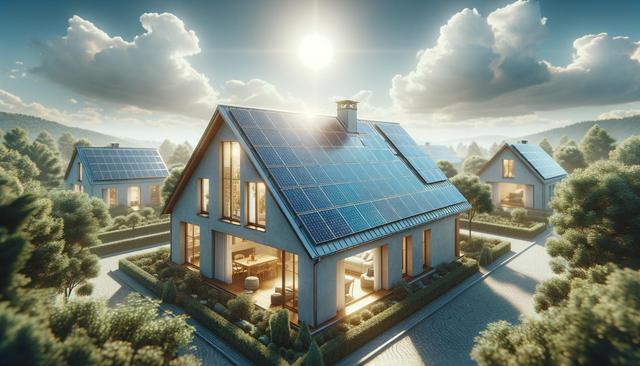Understanding Solar Roofing Systems
Solar roofing systems integrate photovoltaic technology directly into roofing materials, enabling homeowners to generate electricity from sunlight. Unlike traditional solar panels that are mounted onto an existing roof, solar roofs are designed to replace conventional roofing materials altogether. These systems serve a dual purpose: they protect the home from the elements while also producing clean energy. As technology advances, more options are becoming available, including solar shingles and tiles that blend seamlessly with various architectural styles. This evolution is making solar energy more accessible and appealing to a wider range of homeowners.
Many solar roofing systems are built using durable materials like tempered glass and are engineered to withstand harsh weather conditions. Their design often includes features such as water-shedding capabilities and integrated wiring to maintain a streamlined appearance. With the increasing availability of financing options and incentives, homeowners are finding it easier to make the switch to solar roofs, seeing them not just as an energy solution but also as a long-term investment in their property.
Why Solar Roofs Are Gaining Popularity
The growing popularity of solar roofs can be attributed to several practical and environmental factors. As energy prices fluctuate and concerns about climate change intensify, homeowners are looking for reliable, self-sustaining energy sources. Solar roofs answer that call by providing:
- Reduced electricity bills through on-site energy generation
- Lower carbon footprints and reduced reliance on fossil fuels
- Increased property value due to energy-efficient upgrades
- Aesthetic integration for a modern, clean roof design
Additionally, government incentives and rebates in many regions help offset installation costs, making solar roofs an even more attractive option. Their appeal is particularly strong among eco-conscious homeowners and those looking to future-proof their homes against rising energy costs.
Cost and Long-Term Value
While the upfront cost of installing a solar roof can be significant, the long-term savings often outweigh the initial investment. Over the lifespan of the system, which typically ranges from 25 to 30 years, homeowners can save thousands of dollars in utility bills. Moreover, the longevity of solar roof materials often surpasses that of traditional roofing, potentially reducing maintenance and replacement expenses over time.
Here are a few ways solar roofing systems deliver long-term value:
- Energy independence by producing your own electricity
- Eligibility for tax credits and utility incentives
- Potential to sell excess energy back to the grid in some areas
- Improved home resale appeal due to energy-efficient features
These financial advantages, coupled with the decreasing cost of solar technology, continue to drive interest and investment in solar roofing systems.
Installation and Compatibility Considerations
Installing a solar roof requires careful planning and evaluation. Not all homes are immediately suitable for solar roofing; factors like roof orientation, shading from nearby trees or buildings, and structural integrity must be assessed. A certified installer typically conducts a site analysis to determine whether the home can efficiently support solar energy generation.
Important installation considerations include:
- Roof age and condition, as older roofs may need replacement prior to installation
- Local building codes and permitting requirements
- Availability of compatible solar roofing products for the home’s architectural style
- Connection to local utility grids for net metering or backup power
Homeowners interested in solar roofing should consult with experienced professionals to explore options that align with their energy goals and budget. With proper planning, the transition to a solar roof can be smooth and highly rewarding.
Environmental and Community Impact
Beyond individual savings, solar roofing systems contribute significantly to broader environmental goals. They help reduce greenhouse gas emissions by decreasing the demand for electricity from fossil-fuel-powered plants. On a larger scale, widespread adoption of solar roofs can lead to more resilient and decentralized energy infrastructures, especially in communities prone to power outages or natural disasters.
Community-wide benefits of solar roofing include:
- Lower collective energy consumption and strain on the grid
- Creation of green jobs in the solar installation and maintenance sectors
- Encouragement of sustainable building practices and innovation
- Support for clean energy initiatives and climate action plans
As awareness grows about the environmental impact of traditional energy sources, more neighborhoods and municipalities are encouraging or even mandating solar-ready construction. This shift positions solar roofing not just as a personal investment, but as a meaningful contribution to long-term environmental stewardship.
Conclusion: Moving Toward a Brighter Energy Future
For homeowners seeking a practical and sustainable way to power their lives, solar roofing systems offer a compelling solution. They transform ordinary rooftops into sources of clean energy, reduce long-term costs, and contribute to a healthier environment. As the technology continues to evolve and become more cost-effective, solar roofs are expected to play an increasingly important role in residential energy strategies. By embracing this innovation, homeowners can take active steps toward energy independence while supporting a broader transition to renewable energy.




Leave a Reply